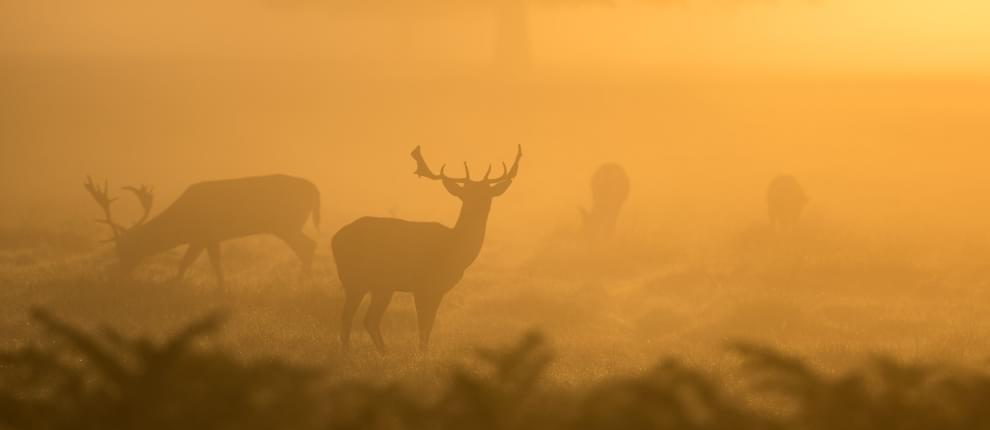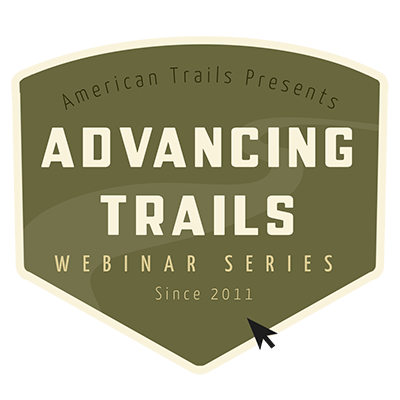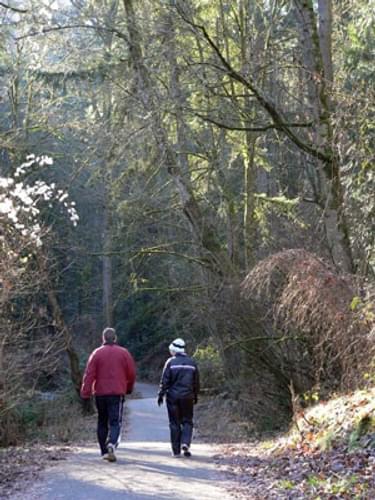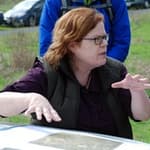




Subscribe to our mailing list for notifications on our latest trainings.

This webinar examines strategies to include wildlife habitat throughout the trail planning process.
Presented by:
** This event has passed **
May 15, 2014
10:30 AM to 12:00 AM (Pacific Time) {more time zones}
Cost (RECORDING):
FREE for membersNote:
Closed Captioning is available for this webinar.
Learning Credits are NOT available for this webinar.
This webinar is free. Would you consider a donation to support this webinar?

FOREST PARK IN PORTLAND IS ONE OF THE COUNTRY'S LARGEST URBAN FOREST RESERVES
Attendees will learn about:
Recent decades have brought increased interest in building trails in urban areas that connect people to work and play. In the Portland, Oregon, metropolitan area, this has sometimes put trail and wildlife advocates at odds.
Within the region’s urban matrix, there are a few large expanses of habitat; for example, the 5,000-acre Forest Park is in the heart of Portland. Most of the other habitat areas within the urban area are much smaller and often isolated. Riparian corridors provide continuity, but are often very narrow (e.g., 25-50 feet wide). Often, so little habitat is left that wildlife and trail advocates fight over the remnants. This changes a relationship that should be a natural partnership to one of mistrust and antagonism where nobody wins.
Presenters Robert Spurlock and Elaine Stewart are trying to reverse this trend by collaboration and deliberate inclusion of wildlife habitat throughout the trail planning process. Their work began in earnest on a master plan for the Westside Trail, which spans multiple jurisdictions. They will share the lessons they learned, including common knowledge gaps in biologists and planners and ways to bring them together for productive teamwork, from first conceptual alignments to final construction. They will also present a new tool for trail planners. Called the Top 10, it includes key principles and milestones where planner-biologist collaboration can avoid conflicts during permitting, plan review, and other key steps in trail development.
Robert Spurlock, Associate Regional Planner, Oregon Metro Regional Government

Robert Spurlock is an Associate Regional Planner with Metro. He has more than 10 years of experience in urban planning and natural area land management. His project work includes regional trail master planning, active transportation system planning, site planning, right-of-way acquisition, and public involvement. Prior to Metro, Robert worked in Managua, Nicaragua as an Afro-Caribbean music promoter, high school teacher and restorer of liberation theology-themed murals. He holds a B.A. in geography and urban studies from Macalester College, and has completed graduate coursework in urban and regional planning at Portland State University.
Elaine Stewart, Senior Natural Resources Scientist, Oregon Metro Regional Government

Elaine Stewart is a Senior Natural Resources Scientist with Metro, a regional government in Portland, Oregon. She is a project manager for natural area restoration projects, managing and overseeing feasibility analyses, project scoping, development of project funding, project implementation, and evaluation of project effectiveness. Her ecological restoration projects encompass nearly every ecosystem in the lower Willamette Valley and include rare plant and wildlife conservation. Prior to joining Metro in 1996, Elaine worked for the Oregon Department of Fish and Wildlife for many years in marine recreational and commercial fisheries management. She completed her B.S. degrees at Oregon State University’s Department of Fisheries and Wildlife, and she holds a M.S. in Fisheries and Wildlife from the University of Missouri.
Elaine became interested in wildlife and trail issues when she witnessed struggles between wildlife advocates and trail proponents, often fighting over small strands of natural habitat in urban areas. She joined Robert’s team on the Westside Trail project, where the two collaborated to find a better way to address habitat issues and opportunities in urban trail planning. They are now reaching out to share their lessons learned and gain from the experience of others.
We are offering closed captioning for our webinars, thanks to a partnership with VZP Digital. If you are in need of this service, please email us prior to the webinar. An unedited transcript will be sent to all attendees following the webinar.
While we may individually agree (or disagree) in whole or in part with any or all of the participants, the views expressed in these webinars are not necessarily representative of the views of American Trails as an organization or its board and staff. Unless specific situations are noted by presenters, nothing in American Trails webinars should be considered to be interpreted as a standard.
By registering for our webinars, you submit your information to the webinar organizer and associated presenters and sponsors, who may use it to communicate with you regarding this event and their other services. Your organization may also be added to the American Trails Business Directory. You can easily cancel your registration at any time.
1,316 views • posted 02/12/2018
